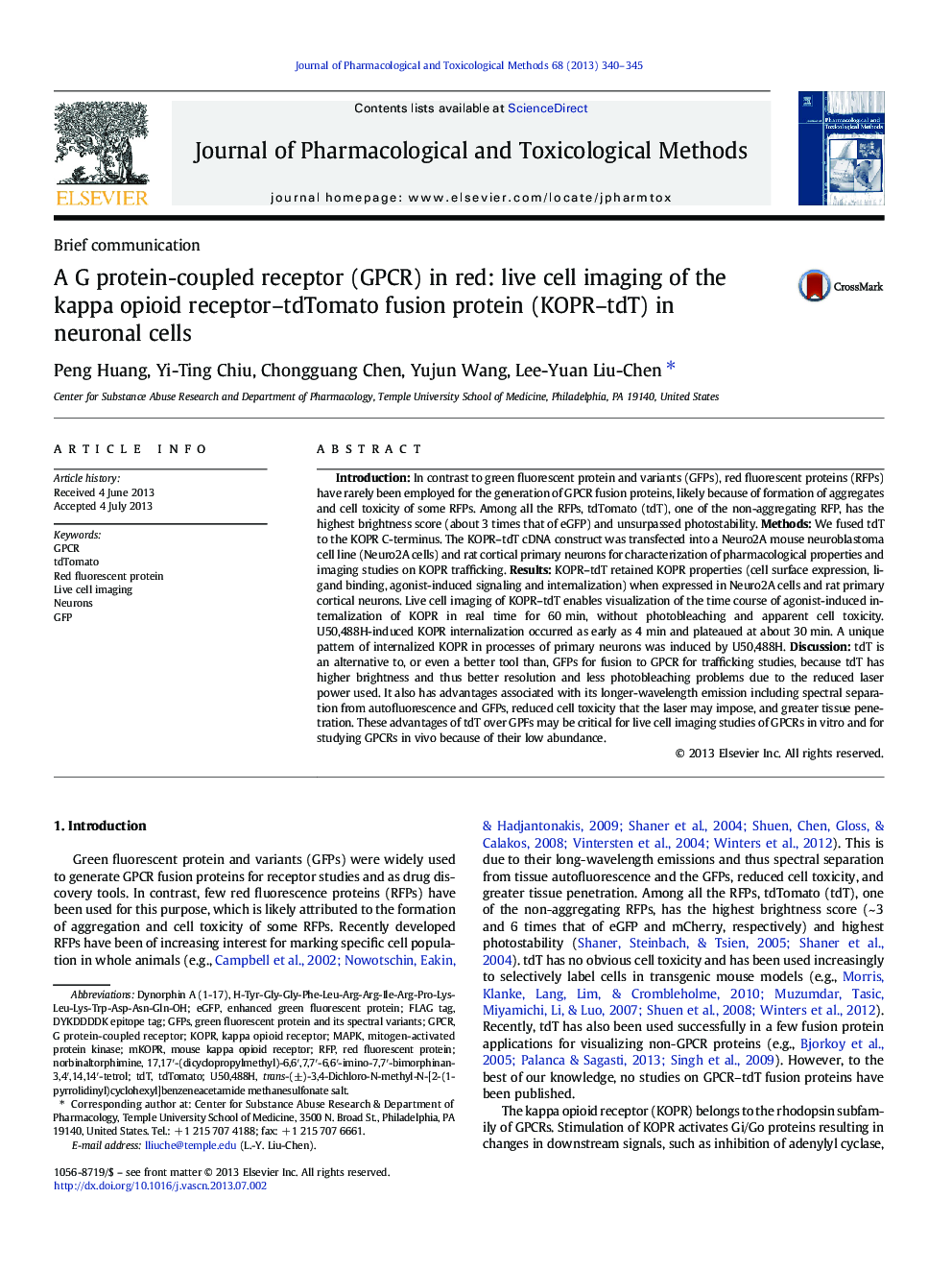| کد مقاله | کد نشریه | سال انتشار | مقاله انگلیسی | نسخه تمام متن |
|---|---|---|---|---|
| 2549162 | 1124504 | 2013 | 6 صفحه PDF | دانلود رایگان |

IntroductionIn contrast to green fluorescent protein and variants (GFPs), red fluorescent proteins (RFPs) have rarely been employed for the generation of GPCR fusion proteins, likely because of formation of aggregates and cell toxicity of some RFPs. Among all the RFPs, tdTomato (tdT), one of the non-aggregating RFP, has the highest brightness score (about 3 times that of eGFP) and unsurpassed photostability.MethodsWe fused tdT to the KOPR C-terminus. The KOPR–tdT cDNA construct was transfected into a Neuro2A mouse neuroblastoma cell line (Neuro2A cells) and rat cortical primary neurons for characterization of pharmacological properties and imaging studies on KOPR trafficking.ResultsKOPR–tdT retained KOPR properties (cell surface expression, ligand binding, agonist-induced signaling and internalization) when expressed in Neuro2A cells and rat primary cortical neurons. Live cell imaging of KOPR–tdT enables visualization of the time course of agonist-induced internalization of KOPR in real time for 60 min, without photobleaching and apparent cell toxicity. U50,488H-induced KOPR internalization occurred as early as 4 min and plateaued at about 30 min. A unique pattern of internalized KOPR in processes of primary neurons was induced by U50,488H.DiscussiontdT is an alternative to, or even a better tool than, GFPs for fusion to GPCR for trafficking studies, because tdT has higher brightness and thus better resolution and less photobleaching problems due to the reduced laser power used. It also has advantages associated with its longer-wavelength emission including spectral separation from autofluorescence and GFPs, reduced cell toxicity that the laser may impose, and greater tissue penetration. These advantages of tdT over GPFs may be critical for live cell imaging studies of GPCRs in vitro and for studying GPCRs in vivo because of their low abundance.
Journal: Journal of Pharmacological and Toxicological Methods - Volume 68, Issue 3, November–December 2013, Pages 340–345